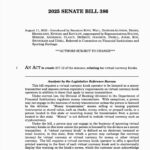How One Trader Transformed $125K into $43M on Ether — And What You Can Learn From It
A crypto trader succeeded in turning a $125,000 deposit into one of the largest Ether positions ever recorded on Hyperliquid. Over the course of four months, they compounded every gain into a single Ether (ETH) long, subsequently controlling more than $303 million in exposure. At its peak, their equity reached $43 million. When the market started to reverse, they closed the trade entirely, walking away with $6.86 million in realized profit (a 55x return on the initial investment). This scenario illustrates both the remarkable potential of aggressive compounding and leverage, as well as how quickly it could have unraveled in the opposite direction.
Did you know? Ethereum’s dominance in decentralized finance (DeFi): As of July 2024, Ethereum accounted for approximately 59.2% of the total value locked (TVL) across all blockchains, with DeFi’s TVL exceeding $90 billion.
The Journey from $125,000 to $43 Million
In May, the trader deposited $125,000 into Hyperliquid and opened a leveraged long on ETH. Instead of securing early profits, they reinvested every dollar back into the position, continuously increasing the size as price movement worked in their favor. Within four months, the position expanded into a $303 million long. At the peak of the rally, the account reflected over $43 million in equity, representing a 344x paper return on the original deposit.
However, markets can turn swiftly. In August, amidst increased volatility and substantial selling by large ETH holders, the trader unwound 66,749 ETH longs. This exit secured $6.86 million, a fraction of their peak paper gains, but still a remarkable 55x return.
Why It Worked: Compounding with Leverage
Two factors drove this success: compounding and leverage.
- They generated exponential growth by reinvesting every gain into the same trade. Each victory funded a larger position, and leverage amplified this effect, accelerating both risk and reward.
- Timing was also crucial. While the trader was compounding, whales started reducing exposure, and US spot ETH exchange-traded funds (ETFs) experienced $59 million in outflows, marking the end of a months-long inflow streak. These signs of declining demand likely influenced their choice to exit before the correction intensified.
The outcome reflected the alignment of an aggressive strategy with the changing market context; the moment when compounding, leverage, and timely exit decisions combined to create an extraordinary result.
Did you know? In DeFi lending, the average leverage across major platforms typically ranges from 1.4x to 1.9x (similar to traditional hedge funds). In contrast, the Hyperliquid trader almost certainly operated at 20-30x leverage, significantly higher than the average.
Why It Could Have Gone Wrong
While the upside was remarkable, the strategy involved considerable risk. Leveraged trades depend on strict margin requirements, and market downturns can happen in an instant. A single price fluctuation could wipe out months of gains.
We only need to look to history for examples. In July 2025, the crypto markets experienced $264 million in liquidations in one day, with Ether longs alone losing over $145 million as bearish pressure cascaded through positions. For anyone compounding aggressively, that type of move could have been devastating.
The trader’s decision to exit was the reason their story concluded with a profit. Many others employing similar high-risk strategies on Hyperliquid were not as fortunate. One report indicated that a trader (Qwatio) who made $6.8 million in profits ended up losing it all with a $10 million loss. Compounding and leverage can lead to massive returns, but they also amplify every flaw in your strategy.
Did you know? Hyperliquid notably turned down venture capital funding, allocated 70% of its tokens to the community, and directs all platform revenue back to users, driving rapid HYPE token value growth into the top 25 cryptocurrencies by market cap.
What Can Be Learned?
Here are some principles to keep in mind:
- Compound with caution: Reinvesting profits can speed up growth, but it also can backfire. Just as gains compound, so can mistakes.
- Have an exit plan: The trader preserved $6.86 million by cashing out when the signals changed. Without a clearly defined exit strategy, paper gains often remain just that — on paper.
- Respect leverage: Leverage amplifies results in both directions. Even small fluctuations in ETH can trigger liquidation of large positions.
- Read the market backdrop: Broader signals are important. Whale selling and $59 million in ETF outflows in mid-August pointed to cooling sentiment. These indicators strengthened the rationale for stepping back.
- Think in scenarios, not just upside: Always stress-test. What happens if the price drops by 20% or even 40%? Your margin needs to endure because profits only matter if you remain solvent during downturns.
- Treat leverage as a tool, not a crutch: When used carefully with stop-limits or partial de-risking, it can enhance trades. When used recklessly, it’s the quickest path to disaster.
This trader’s journey illustrates both the opportunities and the risks associated with DeFi trading on platforms like Hyperliquid. Powered by its own high-performance layer 1 (HyperEVM) and an on-chain order book, Hyperliquid can execute trades at speeds comparable to centralized exchanges — something that many traditional decentralized exchanges (DEXs) struggle to achieve. This efficiency allows for positions as large as hundreds of millions of dollars to be held.
However, scale also introduces fragility. The JELLY incident, where governance had to intervene to safeguard the insurance pool, revealed how quickly cross-margin risk models can buckle under stress. The intervention prevented losses but raised uncomfortable questions about centralization, transparency, and whether these platforms are truly “trustless.”
Wider lessons emerge. Institutional capital (from ETFs to corporate treasuries) is beginning to influence price movements in Ether, compelling retail traders and whales to respond more rapidly to external pressures. Meanwhile, strategies once confined to centralized venues are migrating on-chain, with traders utilizing multimillion-dollar leverage directly through DeFi protocols.
This evolution necessitates stronger safeguards for platforms: more robust liquidation engines, stricter margin controls, and governance frameworks that foster trust rather than uncertainty. This trade provides insight into how infrastructure, governance, and institutional investments are reshaping DeFi markets. For traders, the takeaway is clear: tools are becoming more powerful, but the margin for error is narrowing.



















